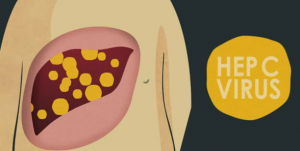WHO publishes guidelines for the treatment of hepatitis C
Hepatitis C is a contagious liver disease that results from infection with hepatitis C virus (HCV). It can range in severity from a mild illness lasting a few weeks to a serious, lifelong illness. According to the Centers for Disease Control and Prevention, about 3.2 million Americans are infected with HCV, globally it affects an estimated 130 million to 150 million people and results in 350,000 to 500,000 deaths a year, the World Health Organization (WHO)notes.

Image/Video Screen Shot
For the first time, WHO has published hepatitis C treatment guidelines, “WHO Guidelines for the screening, care and treatment of persons with hepatitis C infection”. The guidelines complement existing guidance on the prevention of transmission of bloodborne viruses, including HCV.
“The WHO recommendations are based on a thorough review of the best and latest scientific evidence,” says Dr Stefan Wiktor, who leads WHO’s Global Hepatitis Programme. “The new guidance aims to help countries to improve treatment and care for hepatitis and thereby reduce deaths from liver cancer and cirrhosis.”
The guidelines are intended for policy-makers, government officials, and others working in low- and middle income countries who are developing programmes for the screening, care and treatment of persons with HCV infection.
“Hepatitis C treatment is currently unaffordable to most patients in need. The challenge now is to ensure that everyone who needs these drugs can access them,” says Dr Peter Beyer, Senior Advisor for the Essential Medicines and Health Products Department at WHO. “Experience has shown that a multi-pronged strategy is required to improve access to treatment, including creating demand for treatment. The development of WHO guidelines is a key step in this process.”
The new guidelines make nine key recommendations, which include how to boost HCV screening, how to mitigate liver damage for those who are infected and treatment of HCV.
According to the WHO, viral hepatitis is an inflammation of the liver caused by one of the five hepatitis viruses: A, B, C, D and E. They are transmitted through different routes: Hepatitis A and E through contaminated food and water; Hepatitis B – through blood and other bodily fluids; Hepatitis C – mostly through blood; and Hepatitis D – serving as an additional infection in the presence of Hepatitis B.
These viruses all cause acute hepatitis which is characterized by fatigue, loss of appetite, fever and jaundice. Most persons fully recover, but a small proportion of persons can die from acute hepatitis. In addition, hepatitis B and C infections can become chronic leading to cirrhosis and liver cancer. It is estimated that approximately 1.4 million persons die each year from the various forms of viral hepatitis.

















[…] WHO publishes guidelines for the treatment of hepatitis C […]
[…] […]